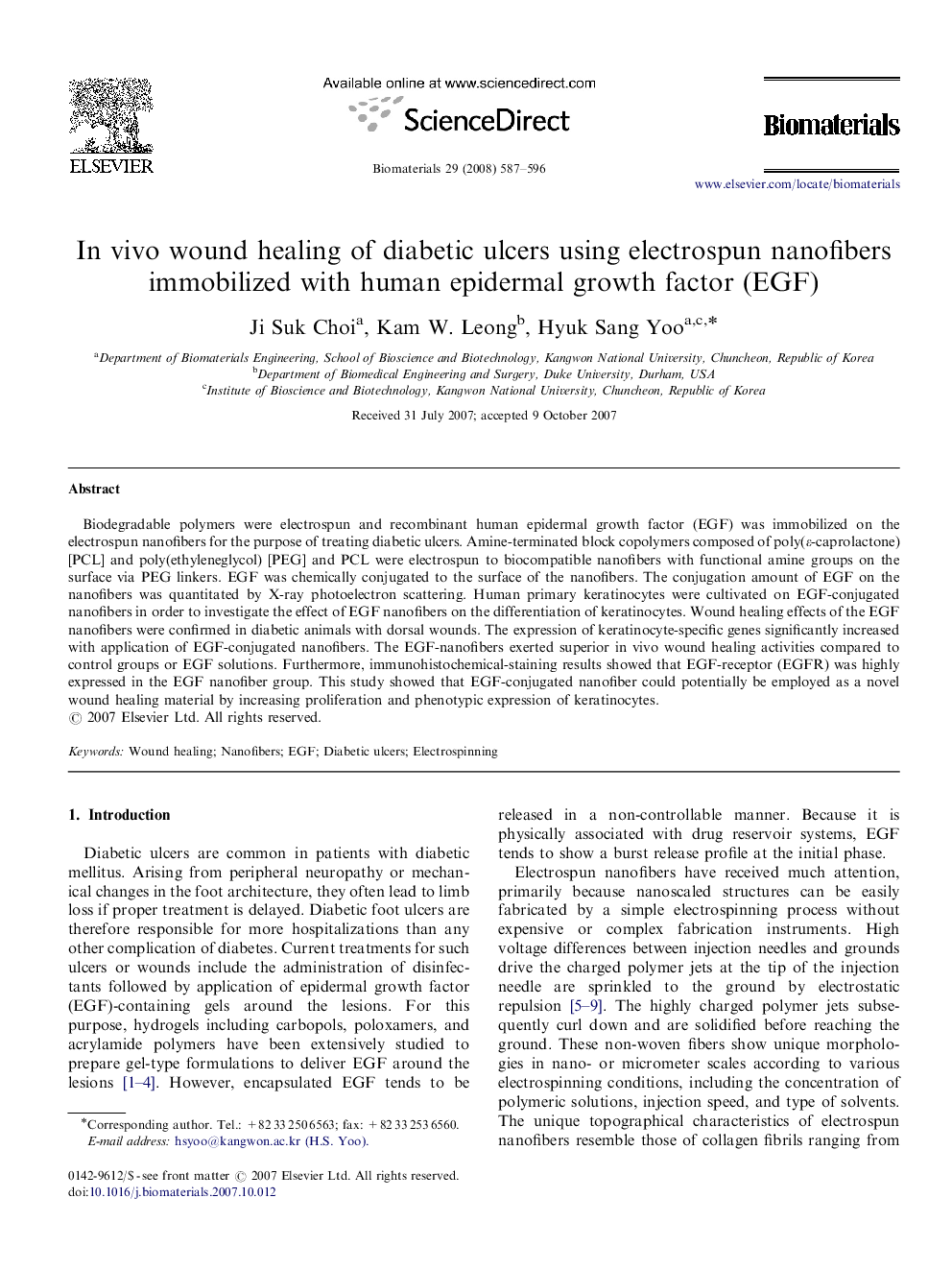| Article ID | Journal | Published Year | Pages | File Type |
|---|---|---|---|---|
| 10044 | Biomaterials | 2008 | 10 Pages |
Biodegradable polymers were electrospun and recombinant human epidermal growth factor (EGF) was immobilized on the electrospun nanofibers for the purpose of treating diabetic ulcers. Amine-terminated block copolymers composed of poly(ε-caprolactone) [PCL] and poly(ethyleneglycol) [PEG] and PCL were electrospun to biocompatible nanofibers with functional amine groups on the surface via PEG linkers. EGF was chemically conjugated to the surface of the nanofibers. The conjugation amount of EGF on the nanofibers was quantitated by X-ray photoelectron scattering. Human primary keratinocytes were cultivated on EGF-conjugated nanofibers in order to investigate the effect of EGF nanofibers on the differentiation of keratinocytes. Wound healing effects of the EGF nanofibers were confirmed in diabetic animals with dorsal wounds. The expression of keratinocyte-specific genes significantly increased with application of EGF-conjugated nanofibers. The EGF-nanofibers exerted superior in vivo wound healing activities compared to control groups or EGF solutions. Furthermore, immunohistochemical-staining results showed that EGF-receptor (EGFR) was highly expressed in the EGF nanofiber group. This study showed that EGF-conjugated nanofiber could potentially be employed as a novel wound healing material by increasing proliferation and phenotypic expression of keratinocytes.
